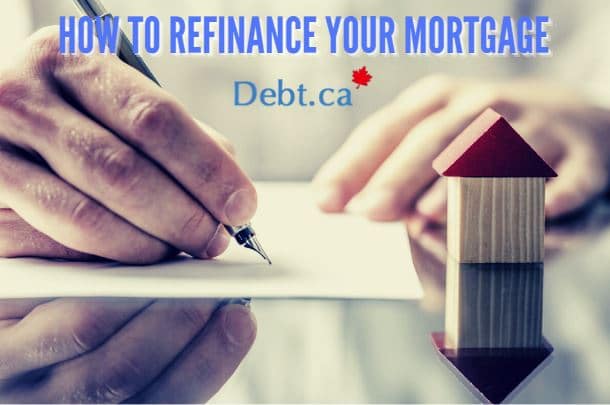Are you a first-time home buyer looking to purchase a home in the near future? You may have heard of and be familiar with the First-Time Home Buyer Incentive (FTHBI). The FTHBI is a government program designed to help those buying a home for the first time. In this article, we’ll look at what the program is, who is eligible for it, how the program works and the upsides and downsides of the program.
What is the First-Time Home Buyer Incentive?
The FTHBI is a national program launched by the federal government back in September 2019. The program aims to help thousands of Canadian families purchase their first homes. When applying for the program, anyone who’s a first-time home buyer and eligible will qualify for an incentive from the Canada Mortgage and Housing Corporation (CMHC).
You may qualify for a five percent incentive that goes toward your down payment if you’re buying a resale home or a five or 10 percent incentive that goes toward your down payment for new homes. This effectively lowers your monthly mortgage payments, making homeownership more affordable.
But before you call up your real estate agent, there are some important things to know.
Firstly, FTHBI is targeted at a specific subset of home buyers. As such, even if you apply, you may not qualify.
“It can be a useful program for those who qualify. If you have other financial priorities like saving for retirement or contributing to your child’s Registered Educations Savings Plan, the FTHBI can help you do just that. It’s important to be familiar with the rules though because not everyone may be eligible,” says Sean Cooper, Bestselling Author of Burn Your Mortgage.
If you take the incentive, it’s not free money. It’s registered as a second mortgage on your home. Although the incentive is interest-free, you must repay the incentive. Either in 25 years or when your home is sold, whichever happens first.
Unlike the Home Buyers’ Plan (HBP), you don’t pay back the FTHBI in installments. You have to pay it back all at once. However, you can pay it back sooner if you choose to do so.
Am I eligible for the First-Time Home Buyer Incentive?
To participate in the FTHBI program, you must meet the program’s eligibility criteria. The purpose of the program is to help first-time home buyers and those who have gone through a relationship breakdown, resulting in divorce or the end of a common-law relationship.
The program can also help those who own rental properties but haven’t owned and lived in a primary residence in the last four years.
To be eligible for the FTHBI, you must meet these criteria:
- You or your spouse has to qualify under the program’s definition of a first-time homebuyer. This means that you haven’t lived in a home you’ve owned or in a home owned by your spouse the last four years (with the exception of those who have gone through a relationship breakdown).
- You have a household income of less than $120,000. Household incomes of $120,000 or more do not qualify for the program. Besides your full-time job, household income also includes investment income, rental income and any income from a co-signor or guarantor.
- You must qualify for an insured mortgage. That means saving up at least the minimum down payment. The minimum down payment requirements on a home priced at or below $500,000 is five percent and 10 percent on any portion above that (up to a $1 million purchase price). It also means putting a down payment of less than 20 percent and having a good credit score and an established history of repaying your debts.
- You borrow less than four times your household income. Since the maximum household income to qualify for the program is $120,000, the most you could borrow and still qualify for the incentive is $480,000. (This includes the FTHBI amount, mortgage payments and mortgage insurance.) If you earn less, you’re limited to borrowing even less. This may pose a challenge because the average price for a home sold in Canada in April 2020 was $488,000, according to the Canada Real Estate Association (CREA).
“If you live in a larger city, these limits probably seem quite restrictive. However, if you’re buying in a small center where incomes and home prices are lower, the FTHBI may mean the difference between being able to afford a home and not,” remarks Cooper.
How does FTHBI Work?
If you believe you’re eligible for the FTHBI, you can apply for the program. In a nutshell, the FTHBI is a shared equity mortgage with the federal government. It’s referred to as a shared equity mortgage because the government shares in any profits or losses on the equity of your home.
By borrowing five or 10 percent of your down payment from the government, you could save between $100 and $300 per month on your mortgage payments and insurance premiums.
What are the Upsides to the FTHBI?
- The main upside to the FTHBI is that it can assist you in coming up with your down payment. The amount borrowed wouldn’t have interest calculated on it.
- Because the incentive goes towards your down payment, the size of your mortgage is smaller than it would otherwise be. This in effect saves you the interest you’d otherwise have to pay over the life of your mortgage. It also saves you the higher insurance premiums you’d normally have to pay on insured mortgages.
What are the Downsizes of the FTHBI?
- The federal government is taking an equity stake in your home. If home prices go up in the future, you’ll have to pay back more money than you originally borrowed. The amount you must pay back is based on your home’s fair market value when you sell your home. The repayment amount could be substantially more if home prices go up a lot over several years or decades. (But also keep in mind that the reverse is true. If you sell your home for less or it’s worthless in 25 years, you’ll pay the government back a lesser amount.)
- The maximum household income to qualify for the program is quite restrictive. It’s not going to help much in pricey housing markets like Toronto and Vancouver.
“If you were hoping to qualify to spend more on a home, it won’t help you do it. You might actually qualify to spend less on a home through the FTHBI. Speak to a mortgage broker or lender to help decide whether the FTHBI is right for you,” says Cooper.
Top Tips for First Time Home Buyers
Know your price before you start shopping
The worst feeling is falling in love with a home but then realizing the bank hasn’t approved you for a big enough amount to afford the purchase. To avoid this heartbreak visit the bank and get preapproved. This process can be long, as there is a lot of paperwork required, but by doing this first you know the bulk of work at the bank is done.
Calculate your affordability
In my experience, how much the bank is willing to lend you and how much you can afford are often two very different numbers. Once you know the bank’s mortgage offer, calculate your affordability as if your rate was 2 percent higher. This will protect you in the case of a rate hike. Even if you take a fixed-rate mortgage, you could be offered a much higher rate at renewal as the market could change.
Factor in all costs
Owning a home is not just the mortgage payment, there are other costs that first-time homebuyers could underestimate. Utility, insurance and general maintenance. Most of these numbers should be available through the selling agent, take a look at those before you decide if this is the right house for you. Maintenance costs can vary, but generally speaking, they’re about 1-2 percent of the value of your house annually.
Measure your commute
Walk score and commute are very important when it comes to keeping your costs down. Many homebuyers miscalculate how long it will take them to get to work every day. This can add a lot of stress, waste more gas and time overall. As well if you’re living in an area with a low walk score you may need to buy an extra car. That automatically adds $10,000 yearly to your cost of living. Take the time to visit your potential new home, not just on a sunny Saturday, but a rainy Tuesday afternoon when you see what it will take to get home from work.
Forecast your own life
The house you’re buying today should suit your life in the years to come. If you plan on staying there for the next decade, for example, what life events do you expect to happen? Do you plan to have kids, expect one of your ageing parents to move in with you? All of this should be considered when purchasing that house. Moving is a huge expense, having to do so for one extra bedroom or slightly more square footage will be a hassle. Avoid all that by buying the house you need now and in the near future.
More tips for First Time Home Buyers to keep in mind
- Understand the difference between a variable and a fixed rate. A variable mortgage is tied to the floating rate, which can change during your term. A fixed rate stays the same regardless of where interest rates go.
- Make every effort to have a 20 percent down payment, this will avoid expensive Canada Mortgage and Housing Corporation (CMHC) insurance that is required on any home with less than that amount of down payment.
- Put money aside for your closing costs. After realtor fees, you can spend roughly 1.5 percent to 4 percent of your purchase price on closing costs. Expenses such as a home inspection, legal fees, and land transfer taxes can all add up.
- This is probably the biggest purchase you will ever make. Make sure it’s what you really want. Talk to residents on the street.
- Check your credit score. You can save time by checking your report and score ahead of time and fixing any mistakes that might be lingering.
- Talk to a mortgage specialist. They can walk you through the initial steps of applying for a mortgage. This helps demystify the process for you, with no pressure.
Related:










